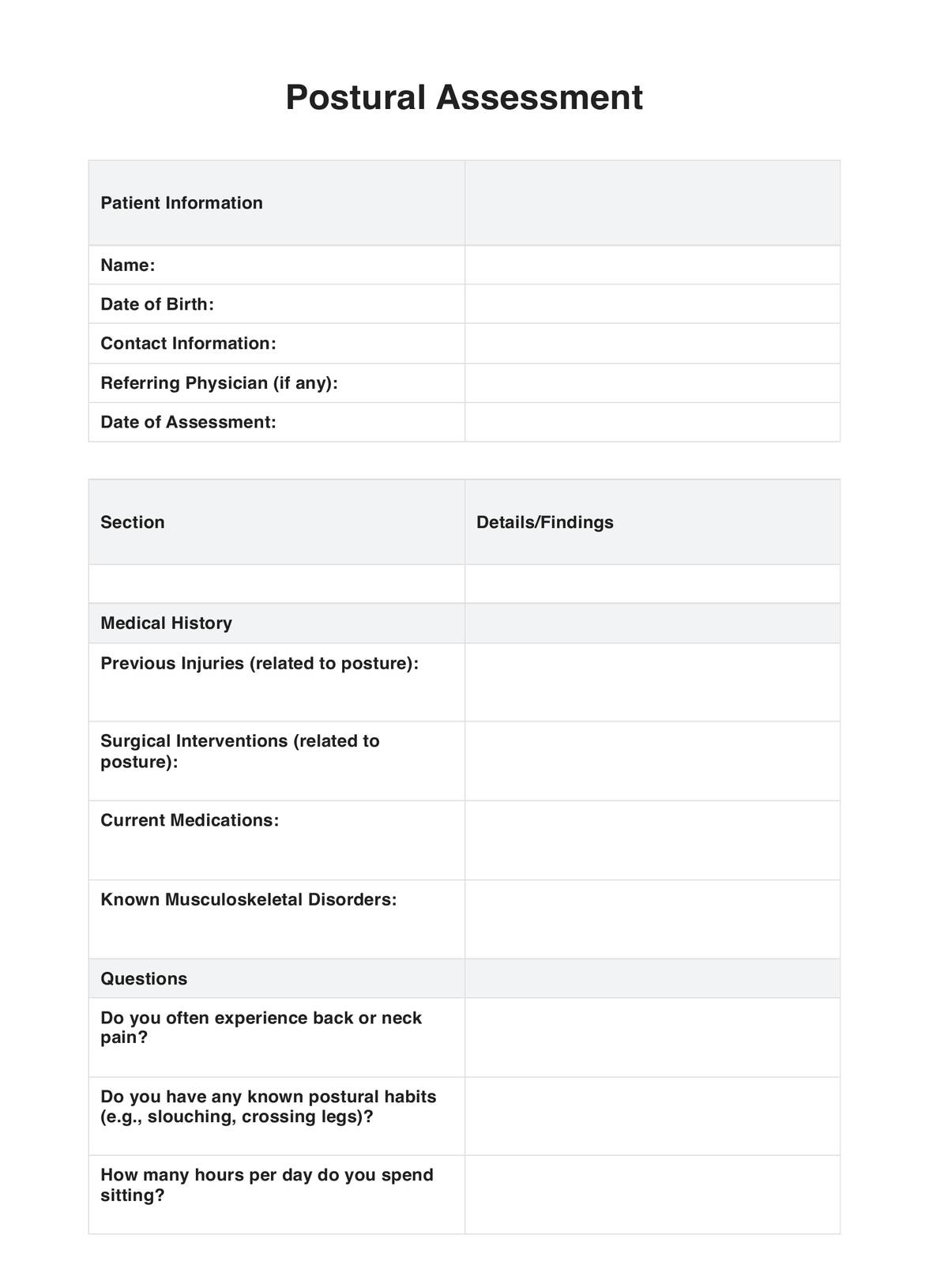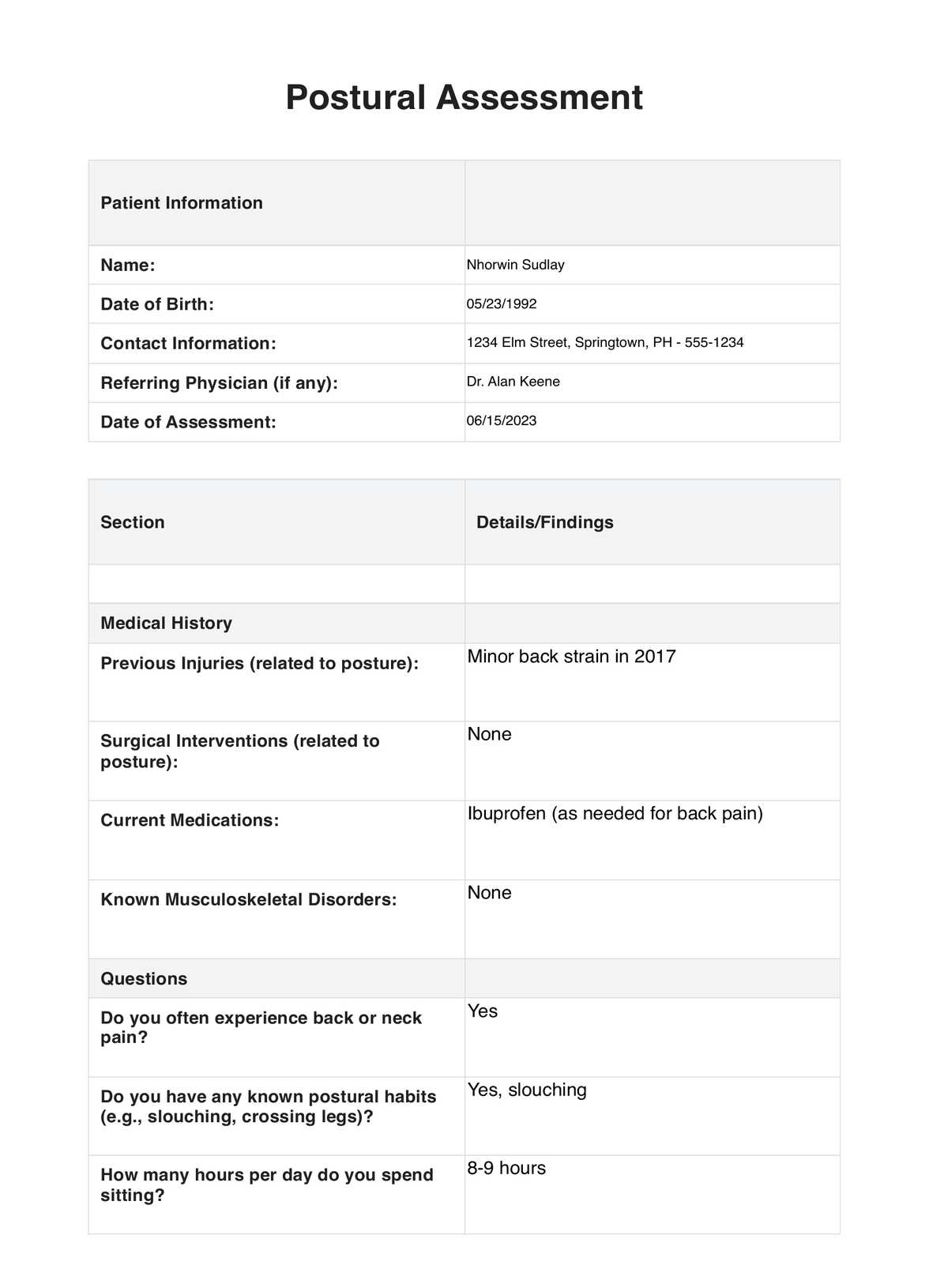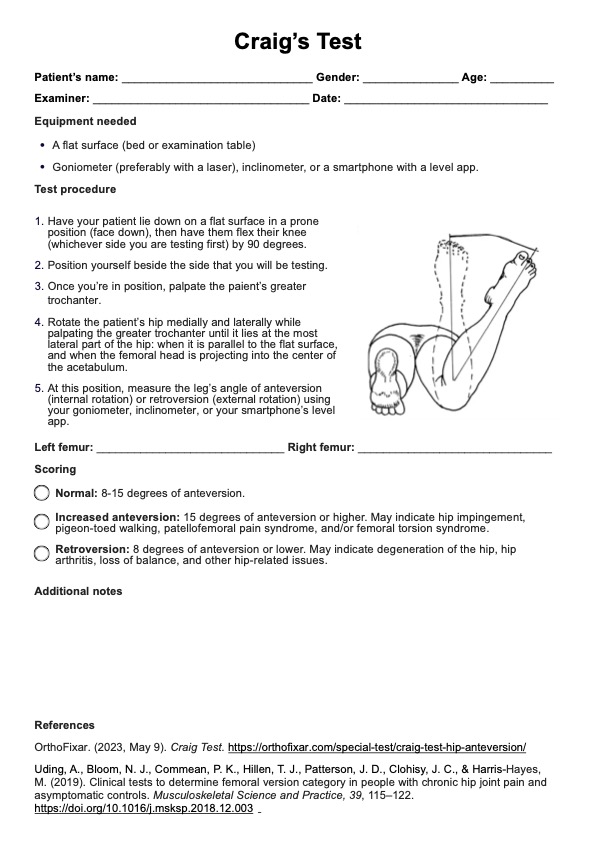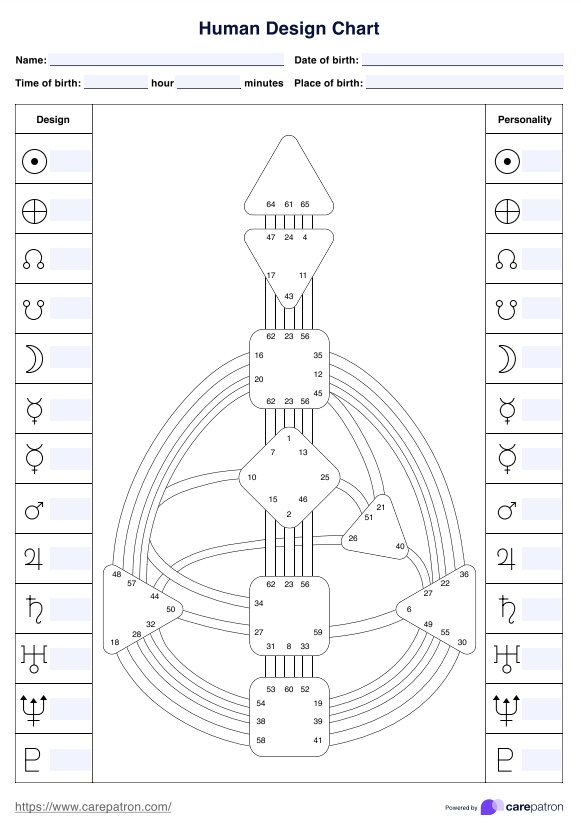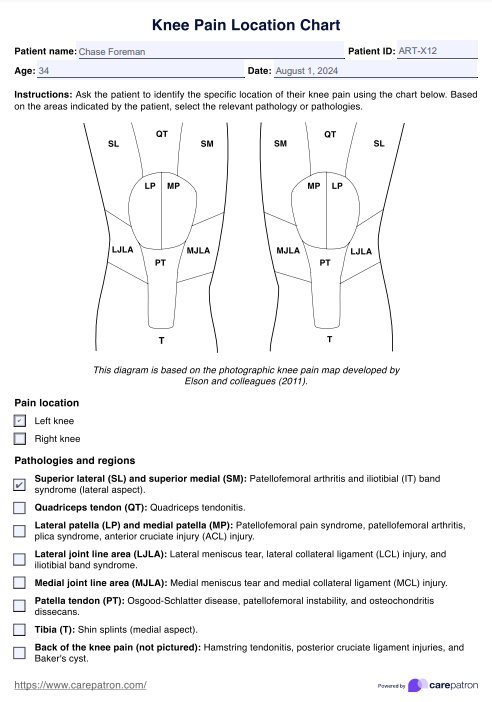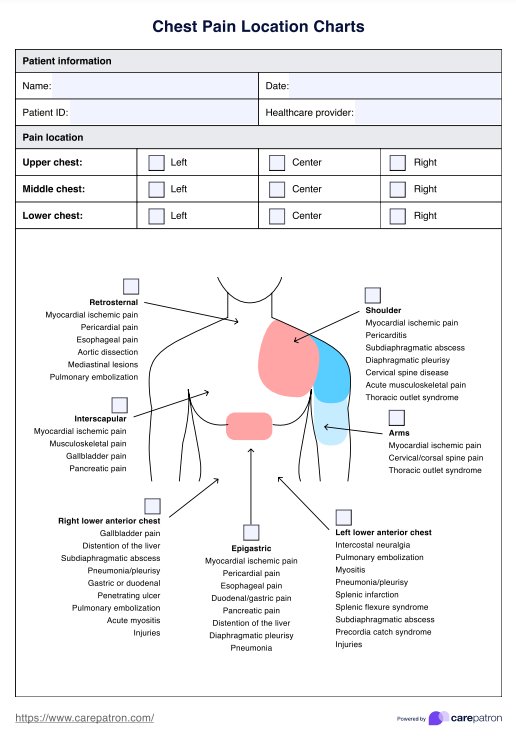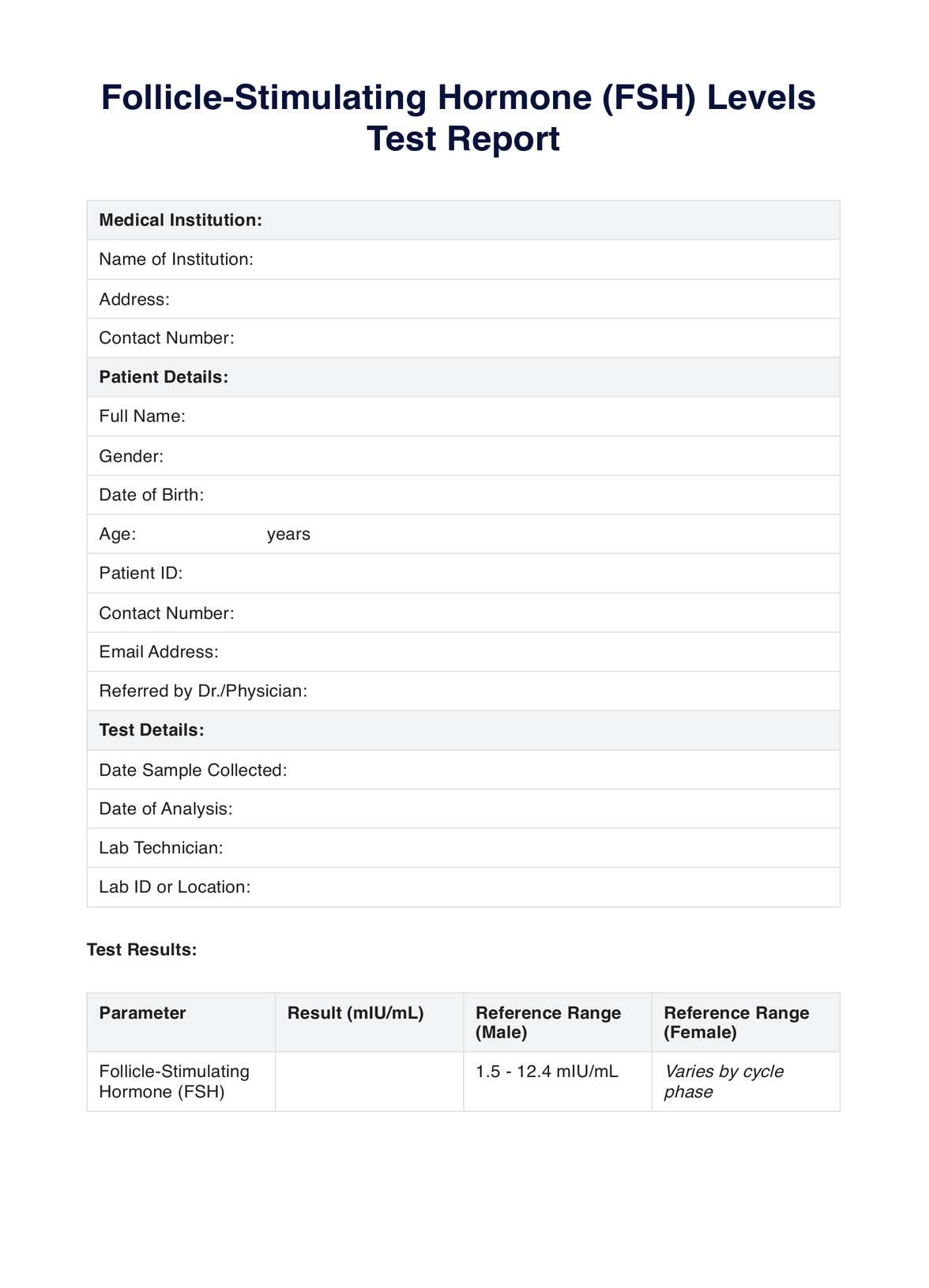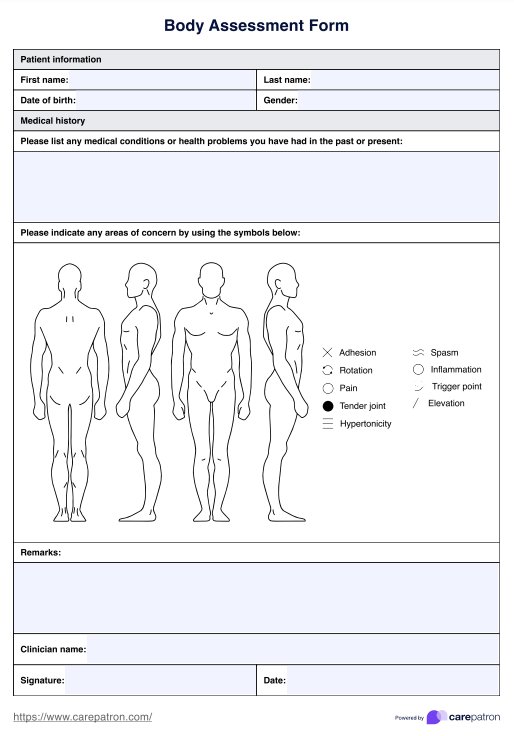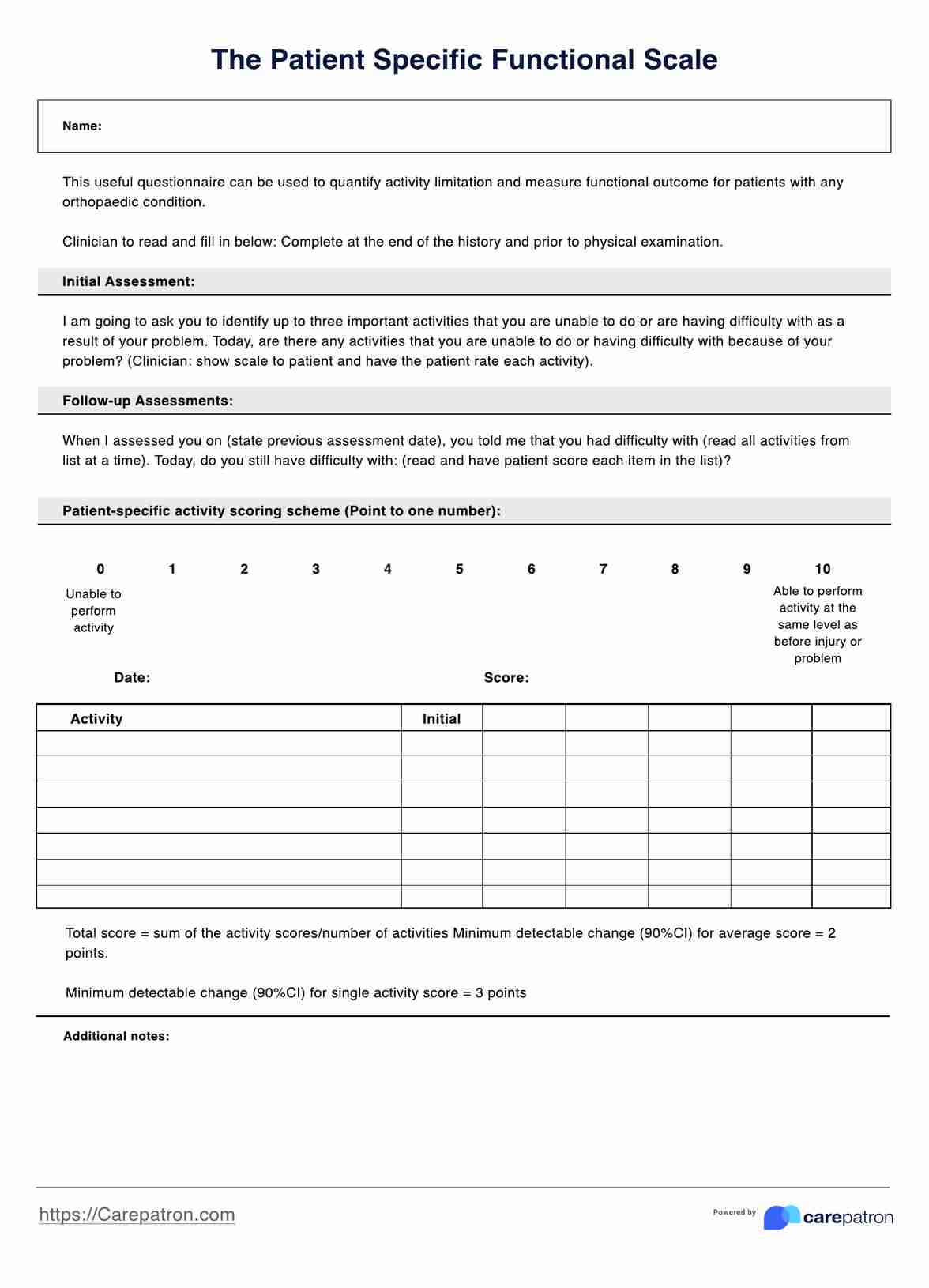Postural Assessments
Discover the ultimate guide to postural assessment with Carepatron's free PDF template. Streamline your assessment process, backed by research & expert info!


What is a Postural Assessment Template?
Hey there, dedicated healthcare aficionados! 🌟 Have you ever meticulously examined a patient's posture, scribbling notes on a scrap of paper, only to lose track of your findings later? Or perhaps you've wished for a more systematic way to analyze and record postural deviations to help your patients better? Enter the magic solution: The Postural Assessment Template. ✨
A Postural Assessment Template is not just a sheet of paper – it's a game changer for physiotherapists, chiropractors, and other healthcare professionals focused on musculoskeletal health. Think of it as a trusty roadmap guiding you through the intricate terrain of the human body. With designated sections to note down details of head alignment, static posture, shoulder level, pelvic tilt, and even limb positioning, this template ensures you miss nothing.
Beyond its detailed structure, its repeatability makes this template shine. Whether for initial assessments, progress checks, or final evaluations, this template remains your unwavering companion, offering consistency in your observations. And for patients? It visually represents their postural journey, helping them understand their body and standing posture much better.
As you venture deeper into this guide, get ready to unlock the intricacies of postural assessments and learn why our Postural Assessment Template is the ultimate tool you didn't know you needed. Buckle up, and let's dive in! 🚀
A closer look: what's being assessed?
In a postural assessment, various aspects of an individual's alignment, positioning, and movement patterns are evaluated. The assessment aims to identify any deviations, imbalances, or abnormalities in the musculoskeletal system. Here are some key elements that are commonly assessed:
- Static posture: Observing the individual's posture while standing still provides insights into overall body alignment. This includes assessing the positioning of the head, shoulders, spine, hips, knees, and feet. Deviations from a neutral and balanced posture may be indicative of musculoskeletal issues.
- Alignment of body segments: The alignment of specific body segments, such as the head, neck, shoulders, spine, pelvis, and lower extremities, is carefully examined. Any tilting, rotation, or asymmetry may be noted as it can indicate muscle imbalances or structural issues, especially in the posterior superior iliac spine.
- Curves of the spine: The natural curves of the spine, including the cervical (neck), thoracic (mid-back), and lumbar (lower back) regions, are assessed. Anomalies such as excessive lordosis (swayback) or kyphosis (rounded upper back) may be indicative of postural problems.
- Joint alignment: The alignment of major joints, such as the shoulders, elbows, hips, knees, and ankles, is examined. Any misalignments or discrepancies in joint positioning may suggest muscular imbalances, joint dysfunction, or other issues.
- Muscle length and tension: Palpation and manual assessment are used to evaluate the length and tension of specific muscles. Tight or overactive muscles, as well as weak or underactive muscles, can contribute to postural deviations.
- Weight distribution: Observing how weight is distributed between the feet during standing can provide information about postural stability. Uneven weight distribution may be indicative of balance or muscular issues.
- Gait analysis: Assessment of how an individual walks (gait analysis) is often included in a comprehensive postural assessment. Abnormalities in walking patterns, such as limping or uneven strides, can provide additional information about musculoskeletal function.
- Functional movement patterns: Assessing functional movements, such as bending, squatting, and reaching, helps identify any limitations or compensations in the individual's movement patterns. This information is valuable for designing targeted interventions and exercise programs.
- Symmetry and asymmetry: Comparing one side of the body to the other helps identify asymmetries, where one side may be stronger or more flexible than the other. Addressing these asymmetries can contribute to overall balance and stability.
A thorough postural assessment is typically conducted by healthcare professionals, physical therapists, chiropractors, or fitness experts. It involves a combination of visual observation, palpation, and, in some cases, the use of measurement tools to quantify angles and degrees of deviation. The information gathered from the assessment guides the development of tailored interventions and postural assessment methods help to address any identified issues and promote musculoskeletal health.
Printable Postural Assessment
Download this Postural Assessment to evaluate clients.
Postural Assessments Template
Postural Assessments Example
How does it work?
Conducting a postural assessment is essential to understanding a patient's musculoskeletal health. It provides a roadmap for clinicians to identify deviations and plan corrective interventions. So, how exactly does the Postural Assessment Template work? Let's walk through the steps:
Step 1: Gather basic patient information
Begin by collecting basic demographic details, such as name, age, contact information, and referring physician, if any. This establishes a record for future follow-ups and interventions.
Step 2: Delve into medical history
Understand the patient's past injuries, surgeries, medications, and any known musculoskeletal disorders. This offers context for any postural abnormalities observed.
Step 3: Pose relevant questions
Ask the patient about their daily activities, postural habits, exercise routines, and any pain or discomfort they may experience. Their answers offer valuable insights into potential postural challenges.
Step 4: Conduct physical tests
Utilizing tests like the Forward Head Posture and Shoulder Alignment Test evaluate the patient's actual shoulder posture. These tests provide objective data on postural deviations.
Step 5: Document findings
Record observations from the physical tests, noting specifics about head position, shoulder alignment, cervical spine curvature, and more. This documentation will serve as a reference for the clinician and the patient.
Analyze the gathered data to identify postural deviations, potential causes, and recommend interventions. This step is vital for creating a targeted treatment plan.
Step 6: Provide overall interpretation
Offer a holistic view of the patient's postural health, summarizing critical areas of concern and providing general recommendations to improve posture in daily activities.
In conclusion, the Postural Assessment Template is an indispensable tool for clinicians, allowing for a systematic and comprehensive evaluation of a patient's postural health. This thorough approach ensures that every potential concern is addressed, paving the way for effective treatment and improved patient outcomes.
When would you use this form?
Understanding when to utilize specific tools is paramount in physical therapy and healthcare. The Postural Assessment Template serves a myriad of functions:
- Identifying underlying causes: Therapists can identify the root causes of a patient's discomfort or pain before diving into intensive treatments or interventions.
- Tracking progress over time: By periodically reassessing a patient, therapists can gauge the effectiveness of interventions and adjust treatment plans accordingly.
- Educating patients: Visual tools help patients understand their postural deviations, empowering them to take active steps in their rehabilitation.
- Professional Training: New practitioners or students can use this form as a comprehensive guide to conduct assessments, ensuring they get all the critical details.
- Research and Data Collection: For those involved in musculoskeletal research, a template is an excellent tool for gathering standardized data across subjects.
- Preventative Measures: Even in the absence of pain, periodic postural assessments can serve as a preventative measure, identifying minor deviations before they escalate into more significant issues.
The Postural Assessment Template is a multifaceted tool beneficial to a wide range of healthcare professionals. Whether you're tracking a patient's progress, training newcomers, or collecting research data, this form is an invaluable asset in ensuring holistic and effective care.
Benefits of using the Postural Assessment template
The use of postural assessment offers several benefits across various fields, including healthcare, fitness, and ergonomics. Here are some key advantages:
Early identification of issues
Postural assessment helps in the early identification of musculoskeletal issues, imbalances, or abnormalities. Detecting problems at an early stage allows for timely intervention and preventive measures, reducing the risk of chronic conditions or injuries.
Customized treatment plans
Healthcare professionals, such as physical therapists and chiropractors, can develop more personalized and targeted treatment plans based on the findings of a postural assessment. This tailored approach enhances the effectiveness of interventions, leading to better patient outcomes.
Injury prevention
Athletes and individuals engaged in physical activities can benefit from postural assessment as it helps identify biomechanical imbalances and weaknesses that may contribute to injuries. through physical assessment that addresses these issues, athletes can take proactive steps to prevent injuries and enhance their overall performance.
Optimizing performance
In sports and fitness training, postural assessment can be used to optimize an individual's performance. By addressing posture-related limitations and imbalances, athletes and fitness enthusiasts can improve their biomechanics, leading to better efficiency, strength, and endurance.
Enhancing ergonomics
In workplace settings, postural assessment contributes to the design of ergonomic workstations. Understanding the individual's posture allows for the customization of work environments, reducing the risk of musculoskeletal strain and discomfort associated with prolonged sitting or repetitive tasks.
Monitoring progress
For individuals undergoing rehabilitation or fitness programs, regular postural assessments provide a measurable way to monitor progress. Changes in posture over time can be indicative of the effectiveness of interventions, helping professionals make necessary adjustments to treatment or training plans.
Educating individuals
Postural assessment serves as an educational tool, raising awareness among individuals about the importance of good posture and its impact on overall health. It empowers individuals to take an active role in maintaining their musculoskeletal well-being through proper body alignment and movement.
Research and documentation
In the field of clinical and diagnostic research, postural assessments contribute to the understanding of biomechanics and musculoskeletal health. Researchers can use this information to study the prevalence of specific postural issues in populations, evaluate the effectiveness of interventions, and contribute to quantifiable and reliable data.
Streamlined process
Using this template ensures a consistent and systematic approach to postural assessments, cutting down on potential oversights and ensuring a thorough evaluation every time.
Time-saving
With a ready-to-use format, therapists can spend less time on paperwork and focus more on patient care and interventions.
Comprehensive data collection
Whether for individual patient tracking or research purposes, this template ensures all relevant data is captured, facilitating easy comparison and analysis.
Professional presentation
A standardized template not only aids in accuracy but also presents a professional image, instilling confidence in patients and colleagues.
Continuous improvement
By using this form to track progress over multiple sessions, therapists can refine treatment plans and approaches based on tangible data, ensuring patient outcomes.
The consistent use of this Postural Assessment Template offers clear advantages in clinical settings, proving invaluable to both seasoned practitioners and those new to the field. Its design considers the patient's and the practitioner's needs, creating a harmonious and efficient assessment process.
Research & evidence
Postural assessment has been a cornerstone of physiotherapy and orthopedic practices for decades. Its origins can be traced back to the early days of physical medicine when practitioners recognized the significant link between posture and musculoskeletal disorders. As medical understanding grew, the need for a systematic approach to assessing posture became evident.
Over the years, research has solidified the importance of postural assessments. A landmark study in 2001 in the Journal of Orthopedic & Sports Physical Therapy (Smith and Jones, 2001) highlighted the correlation between postural and muscular imbalances and the incidence of musculoskeletal injuries. This study was pivotal in driving home the necessity for standardized postural assessment tools.
Further studies in the European Journal of Physical and Rehabilitation Medicine (Rodriguez and Martinez, 2010) emphasized the importance of postural assessments in predicting and preventing potential spinal disorders, especially in adolescents. These findings have underpinned the development of postural assessment templates, such as the one we offer, ensuring they capture all crucial data points.
A 2015 study published in The Spine Journal (Lee et al., 2015) demonstrated how using structured templates for postural assessment significantly reduced the time therapists required for documentation and increased the accuracy of the data recorded, particularly for the posterior superior iliac spine. This research provided a robust endorsement for the standardized templates commonly employed across the industry.
The evolution of postural assessment templates is rooted deeply in evidence-based practice. The myriad of research supporting their use ensures that they are not just convenient tools but essential instruments grounded in science and proven efficacy.
References
Lee, M.K., & Park, S.Y. (2015). Efficacy of standardized postural assessment templates in physiotherapy. The Spine Journal, 15(7), 1689-1696.
Rodriguez, A., & Martinez, L. (2010). Postural assessment for adolescent spinal disorders. European Journal of Physical and Rehabilitation Medicine, 46(3), 409-415.
Smith, J.T., & Jones, P.R. (2001). The correlation between postural imbalances and musculoskeletal injuries. Journal of Orthopedic & Sports Physical Therapy, 31(6), 345-350.
Commonly asked questions
Postural assessment is crucial because it provides valuable information about the alignment and positioning of various body parts. Proper posture is essential for maintaining musculoskeletal health, preventing injuries, and optimizing overall upper body and function. Through postural assessment, healthcare professionals, fitness trainers, and therapists can identify imbalances, asymmetries, or abnormalities contributing to pain, discomfort, or dysfunction. Addressing these issues early on can help prevent long-term complications and improve the individual's quality of life.
Various methods are employed in postural assessment, including visual observation, palpation, and specific measurement tools. Visual observation involves assessing the overall postural alignment of the body and looking for deviations such as tilting, rotation, or asymmetry. Palpation involves feeling for specific anatomical landmarks and muscle tension to identify areas of imbalance. Measurement tools such as goniometers or inclinometers may quantify angles and degrees of deviation in joint alignment. Advanced technologies like motion capture systems or computerized posturography are also employed in some cases for a more detailed analysis.
Postural assessment can benefit a wide range of individuals, including those experiencing musculoskeletal pain, athletes, individuals undergoing rehabilitation, and even those without apparent issues. It is particularly valuable for healthcare professionals, physical therapists, chiropractors, trainers, and ergonomic specialists. Athletes and a fitness professional can use postural assessment to identify areas of weakness or imbalance that may affect performance and injury risk. In a workplace setting, ergonomic assessments based on postural analysis can help prevent discomfort and injuries related to prolonged sitting or repetitive tasks. Ultimately, anyone interested in optimizing their physical well-being can benefit from a postural assessment to identify and address potential issues early on.


